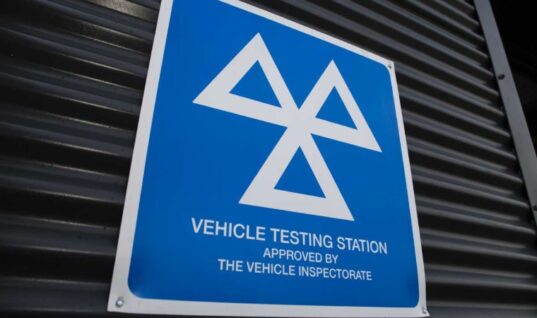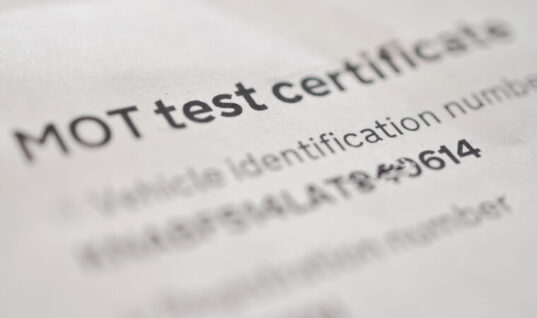1960
The testing scheme, known as the ’10-year test’ is introduced on Monday 12 September 1960 as part of the Road Traffic Act. It costs 15 shillings (75 pence) for cars, including one shilling for a pass certificate, which wasn’t charged if the car failed. A retest at a reduced rate is available within 14 days of failure.
It’s aimed at the 1.5 million cars registered more than 10 years ago, with The Autocar saying: “It is hoped that vehicles which are less than 10 years old will also be submitted for examination. In time the scheme will be extended to younger vehicles.” The voluntary test, which examines the brakes, steering and lights, is available at around 12,500 garages, plus the Ministry of Transport’s testing station at Hendon. The Autocar adds: “Requirements of the test are not new or onerous, and any vehicle that has been properly constructed and reasonably maintained should pass without difficulty. It is not the purpose of the test to drive older vehicles off the roads simply because of their age; if they fail the test it will be because they are not roadworthy – and in many cases actually unsafe. The test is concerned only with brakes, steering gear, lighting equipment and reflectors; defects in other respects will not disqualify unless they have a direct effect on brakes or steering, or unless the tester feels they involve risk of accident or damage in driving the vehicle.”
Not everyone agrees with its introduction, with one motorist telling The Liverpool Echo: “For sheet nonsense this takes the biscuit. Judging from press photographs and reports ‘the old car’ is hardly ever observed as the culprit in a smash.” On 23 September, Ernest Marples, the then Minister of Transport, says that 52 percent of cars examined at the centre in Hendon have failed the test, adding: “They belonged to owners who thought their cars were good. In some quarters it has been suggested that, because mechanical defects are responsible for killing and maiming fewer people than other causes, vehicle testing should be abandoned. I decisively reject that view.”
1961
The voluntary period ends on 15 February, while an unexpectedly high failure rate sees the Ministry of Transport reducing the minimum age of a car’s first test from ten years to seven.
1962
An MOT certificate is required to receive a tax disc.
1967
The age for a car’s first MOT is reduced to three years.
1968
The inspection of tyres is added to the MOT test, with the requirement for a minimum tread depth of 1mm, less than the current requirement of 1.6mm.
1977
Indicators, horn, windscreen wipers, exhaust and an inspection of the chassis are added to the MOT test.
1991
It becomes compulsory for children under the age of 14 to wear seatbelts in the back of the car, so rear seat belts are added to the test.
1994
An emissions test becomes part of the MOT for diesel vehicles. The rules get more stringent over subsequent years, along with the inclusion of petrol vehicles.
2005
The MOT test goes digital, with results now stored on a government database.
2008
The Department for Transport (DfT) estimates that, even with the MOT test in place, unroadworthy vehicles account for 10 percent of all UK road accidents and 291 deaths. Without a test, the number of dangerous vehicles would rise by 800 percent, leading to an extra 2,000 deaths and 12,145 serious injuries EVERY YEAR.
2012
Several new checks are added to the test, partly to bring the MOT test in line with testing across Europe, but also to take into account the array of new electronic systems fitted to cars. Checks include dashboard warning lights, electronic stability systems, electronic parking brakes, airbags, tyre monitoring system, inspection of battery and wiring, the presence of a catalytic converter (if applicable), and towbar. Recent mileage history is added to the pass certificate to prevent fraud.
2018
A new MOT Inspection Manual is published, with 18 new testable items, 70 additional inspections of current testable items, and the removal of six testable items. Crucially, there are now three levels of failure: minor, major and dangerous. If a vehicle passes, any minor defects will be shown on the pass certificate, along with any advisories. Other significant changes include stricter limits for emission from diesel cars with a DPF, a new style of MOT certificate and the introduction of MOT exemption for cars over 40 years old.
In November, the DVSA announces that following the changes to the MOT test, more than 744,592 cars have failed the emissions test, which compares to 350,472 failing the test during the same period in 2017.
2023
The Department for Transport launches a consultation on the future of MOTs in Great Britain. Proposals include changing the date of the first MOT from three to four years, with the government saying this could save motorists around £100 million a year in fees.
2024
Following fierce opposition to the proposed changes, the government says the first MOT test will remain at three years from registration and annually thereafter. Of the 4,489 responses, an overwhelming 84 percent are in favour of the retaining the three-year time period.
Source: Garage Wire Aftermarket Magazine







